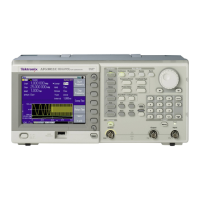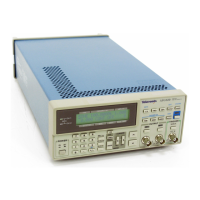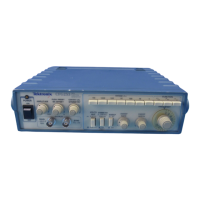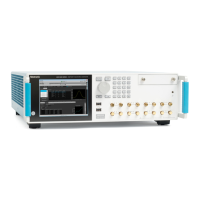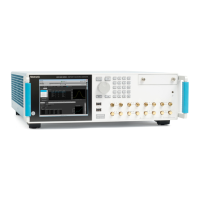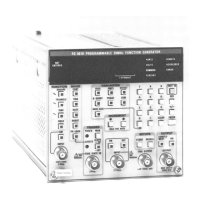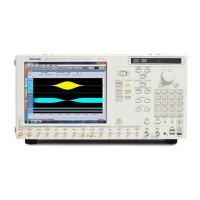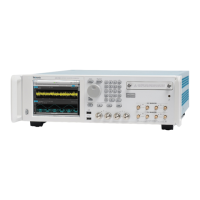Operating basics
VOLTAGE. Displ
ays the current voltage readings for the various mainframe and
module slot voltages. OK is displayed as the status when a voltage is within the
operating range; WARN is displayed w hen a voltage is out of range.
The Voltage readings include the status of the RTC (Real Time Controller) battery
power level. The following readouts may appear:
> 40% (OK) indicates the battery power is good.
20% to 40% (W
ARN) indicates the battery power is getting low and should
be replaced soon.
<20%(LOW)
indicates that the battery should be replaced immediately.
CAUTION. The RTC battery should be replaced before it loses power. The RTC
battery powers non-volatile memory that contains system information such as the
network configuration settings and the real time clock settings. This information
is accessed only when the instrument is powered on and initializes.
FAN SPD. Displays the current fan speed in RPM followed by the status. OK is
displayed as the status when the fan operation is within range; WARN is displayed
when the fan operation is out of range.
PS HRS. Displays the number of hours that the power supply has been active.
The instrument uses a log to track the number of hours that the power supply has
been powering the instrument. For critical applications, you may want to replace
the power supply periodically to prevent down time.
The expected life of the power supply varies with the temperature and load. For
a fully-loaded instrument in a 25 °C room, the power supply is specified to last
at least 15 years (131,400 hours). For a lightly loaded instrument with only one
or
two modules running a 25 °C, the power supply should last 20 years (175,000
hours). At the maximum room temperature, the expected life of the power supply
is significantly less. For example, for a fully loaded instrument operating at 50 °C
room temperature, the expected life of the power supply is 5 years (43,800 hours).
Use these guidelines to help you decide when to replace the power supply.
TG8000 Multiformat Test Signal Generator User Manual 2–45
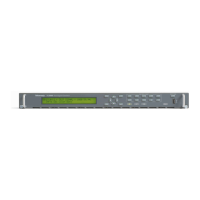
